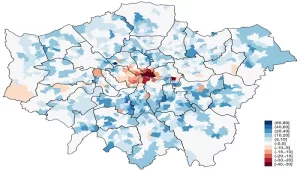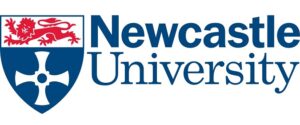8 Ways COVID-19 Has Impacted Medical Education Worldwide

The COVID-19 pandemic has led to unprecedented disruption in almost every walk of our lives. The health care systems are, unquestionably, one of the most affected sectors.
Not so surprisingly, this has had lasting impacts on the medical education industry. The well-established and traditional setup of healthcare institutions struggled to keep up. Yet, the field has also seen an accelerated development.
Let us take a closer look at what these changes are and how medical education across the world has adapted to the new normal.
The Shift to Online Education
As with other educational fields, the medical industry was forced to move to an online learning environment. This was primarily delivered to students either in the format of recorded videos or live distance education.
This definitely has some positive aspects. For one, this allowed students to take advantage of the flexibility of time. Additionally, e-learning helps them adapt to a web-based health care system. This includes efforts such as diagnosis and consultation through digital services.
On the other hand, the lack of hands-on training is likely to have serious implications. This will be particularly evident for students pursuing clinical years next. Before examinations and tests, students can reach out to the professor for clarifications or approach a professional college essay writing service to gain more insight on a complex topic.
Yet, that is not the case with subjects such as anatomy education. This is where innovative educational models came into play in the medical field.
Innovational Teaching Methods
The Coronavirus pandemic demanded the substitution of traditional hands-on education. However, several medical institutions have come up with some innovative ideas to solve this problem.
These measures included new technological concepts such as simulated cases. Some colleges even introduced virtual and augmented reality (VR/AR) and demonstrations of practical procedures. Students could also benefit from remote patient consultation and digital clinical placements.
As advanced as these are, the innovations still limited the interpersonal contact and opportunities to practice interviewing patients. This has become a major obstacle for students to prepare for their clinical practice.
Residency and Rotation
The residency selection of students became another indirectly impacted aspect of medical education. Due to the urgency of the situation, students had to be removed from hospitals to prevent contamination.
This limited their options to explore their specialties of interest. Besides, it led to a loss of elective and core rotations, which added to the uncertainty of career choice.
Students were also unable to consult doctors and mentors. They thus lost the chance of engaging in a field of study which they had not considered before.
Examination
The pandemic has disrupted examinations of medical students. In several countries, both written and clinical examinations have been postponed or canceled. Alternatively, new methods of assessment or online tests have been introduced.
Other changes such as implementing the pass/fail grading system have also been making things difficult for students.
Students in Developing Countries
It is true that such innovative measures have been a solution in many countries. However, similar opportunities were not available for medical students across the world. There are reported issues of poor Internet access and stability.
Surprisingly, some countries also observed an unwillingness to shift to online modalities. In such cases, the impact of the pandemic is yet to be measured to its full extent. It is likely that students are only relying on theory. It means there is no access to clinical training, which could result in serious consequences in the future.

Source: Pexels
International Students
The case of international students is even more uncertain. Many individuals were unable to process their visas on time to start attending classes. Even those who made it are confined in their rooms.
This has led to an increased risk of depression, anxiety, and loneliness. Financial insecurity and lack of family support only contributed to the adverse state. This is particularly the case for those who were unable to travel back home.
New pandemic waves are hitting every country, and travel restrictions are prolonging. All these issues make international students concerned about their academic progression.
Uncertainty Regarding Future
COVID-19 has also affected several other minor aspects of medical education. In fact, it is the aftermath of the direct impact of the pandemic.
Without residency selection, students cannot take part in activities like away rotations. This limits their practical experience in dealing with patients. In addition, this is where students familiarize themselves with the work of hospitals. It is crucial to understand how to maintain a patient record system or respond to emergencies.
It has also induced difficulties in obtaining letters of recommendation from mentors. All in all, medical students who are graduating during these years will possibly feel less competitive. This will further impact their chances of finding a job, especially in the current environment.
Mental Health
Overall, medical students are experiencing challenges that add to their psychological distress. Even under normal circumstances, they belong to an at-risk group for developing anxiety disorders.
Students seem to be experiencing severe mental health difficulties because of
- high workloads;
- evaluations;
- uncertainty about their careers.
The stress has affected sleep quality, with many showing signs of insomnia.
Surveys have also shown that medical students’ burnout syndrome and anxiety decreased with the shift to online education. Of course, these will differ based on the personal circumstance of each individual.
Conclusion
All in all, medical students across the world have experienced a monumental disruption to their education and life. There is no question that they would like the clinical training to restart. Some students are even willing to accept the risk of a COVID-19 infection so as to continue with their academics.
While universities and colleges have reopened in several countries, a large share of the world is yet to slow the rising curve of the pandemic. Unfortunately, this means a longer waiting period for their academic life to get back on track for medical students.














